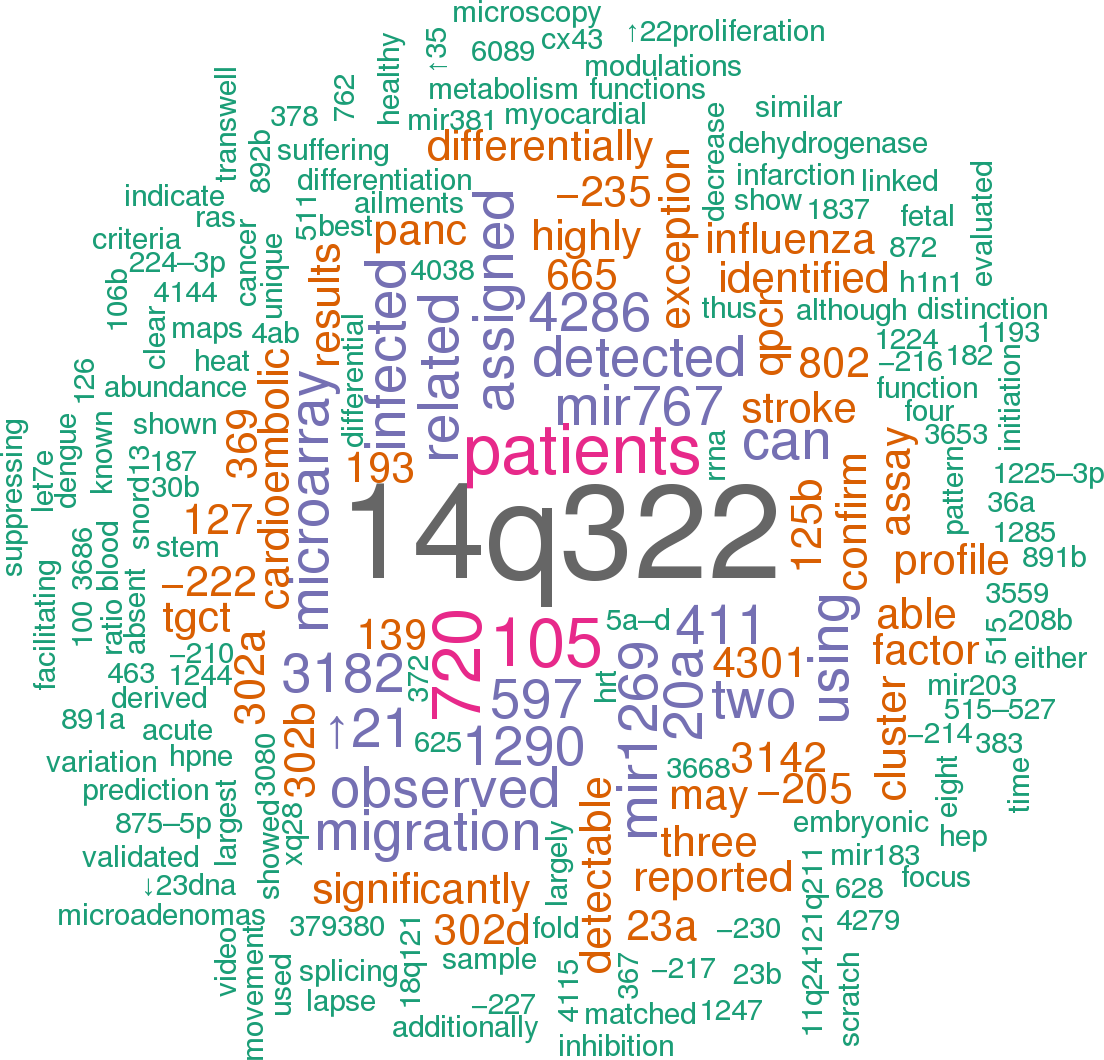Accession
MI0003763
Symbol
HGNC:
MIR767
Description
Homo sapiens
hsa-mir-767 precursor miRNA mir-767
Gene
family?
family?
RF01033;
mir-767
Summary
Caution, this is an AI generated summary based on literature. This may have errors. ?
MIR767 is a microRNA located within a 214.11-kb duplication on the Xq28 chromosomal region, which has been associated with abnormal mental development [PMC6894506]. This duplication, which also includes the GABRA3, MIR105-1, and MIR105-2 genes, was found in both a proband with mental development issues and his healthy mother [PMC6894506]. In the context of cellular interactions, MIR767 has been identified in exosomes derived from senescent vascular endothelial cells and has shown altered expression levels when these exosomes are co-cultured with skin fibroblasts [PMC9908644]. Furthermore, differential expression of MIR767 has been observed in cancer research; it is notably absent in hTERT-HPNE cells but highly expressed in PANC-1 cancer cells [PMC3849454]. Despite these findings, the specific functions of MIR767 remain largely unexplored [PMC3849454].
Literature search

15 open access papers mention hsa-mir-767
(21 sentences)
(21 sentences)
Sequence
1984
reads,
58
reads per million, 39 experiments
gcuuuuauauuguagguuuuugcucaUGCACCAUGGUUGUCUGAGCAUGcagcaugcuugUCUGCUCAUACCCCAUGGUUUCUgagcaggaaccuucauugucuacugc
((....(((.((.(((((((((((((...(((((((..((.((((((.((((.....)))).)))))).)).)))))))...))))))))))))).)).))).....))
((....(((.((.(((((((((((((...(((((((..((.((((((.((((.....)))).)))))).)).)))))))...))))))))))))).)).))).....))
Structure
-uuuu u u UGC UU C U c gc aua ug agguuuuugcuca ACCAUGG GU UGAGCA Gcag a || ||| || ||||||||||||| ||||||| || |||||| |||| u cg ugu ac uccaaggacgagU UGGUACC CA ACUCGU Uguu g ucauc u u CUU -C U C c
Annotation confidence
High
Do you think this miRNA is real?
Genome context
chrX: 152393421-152393529 [-]
Clustered miRNAs
2 other miRNAs are < 10 kb from hsa-mir-767
| Name | Accession | Chromosome | Start | End | Strand | Confidence |
|---|
Disease association
hsa-mir-767 is associated with one or more human diseases in the Human microRNA Disease Database
| Disease | Description | Category | PubMed ID |
|---|
Mature hsa-miR-767-5p
| Accession | MIMAT0003882 |
| Description | Homo sapiens hsa-miR-767-5p mature miRNA |
| Sequence | 27 - UGCACCAUGGUUGUCUGAGCAUG - 49 |
| Evidence |
experimental
cloned [1] |
| Database links |



|
| Predicted targets |



|
Mature hsa-miR-767-3p
| Accession | MIMAT0003883 |
| Description | Homo sapiens hsa-miR-767-3p mature miRNA |
| Sequence | 61 - UCUGCUCAUACCCCAUGGUUUCU - 83 |
| Evidence |
experimental
cloned [1] |
| Database links |



|
| Predicted targets |



|
References
|



